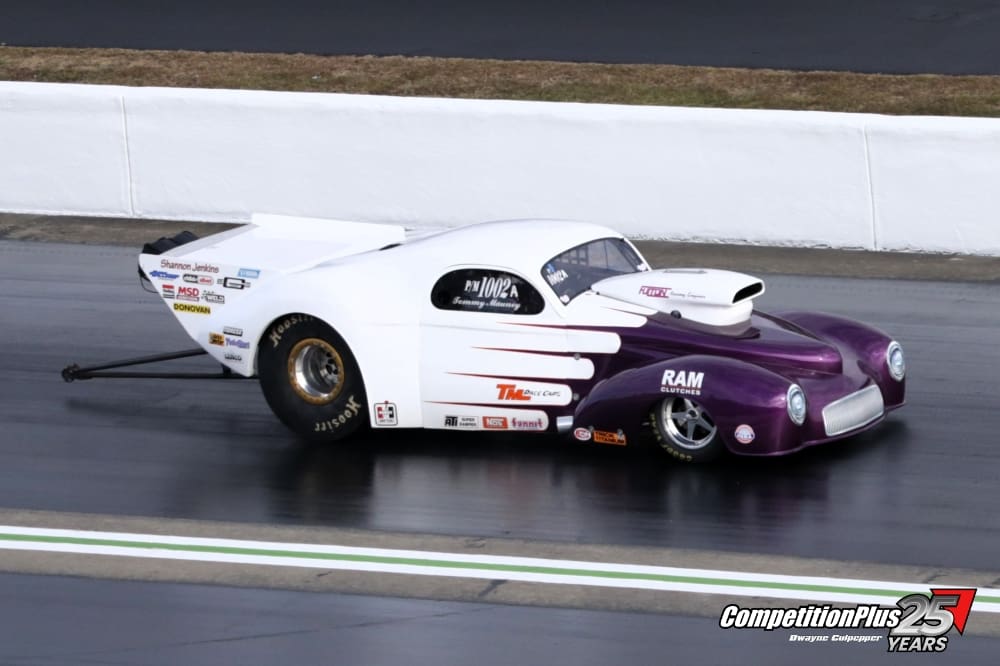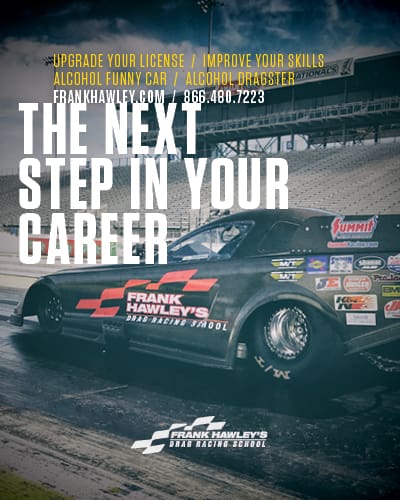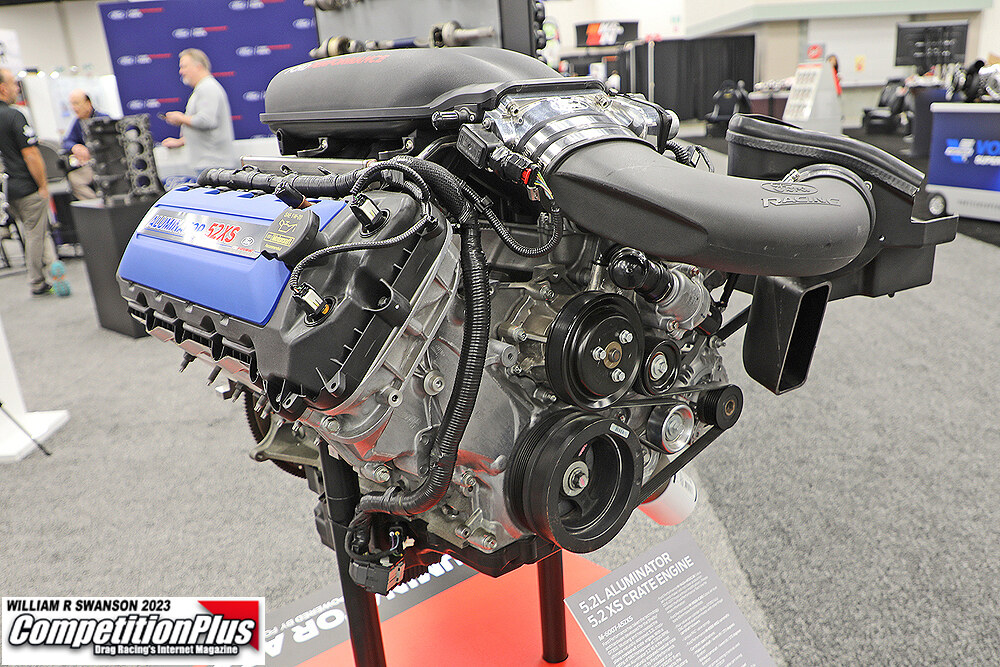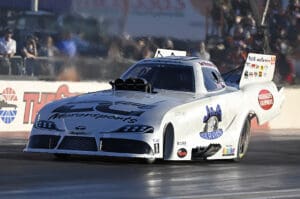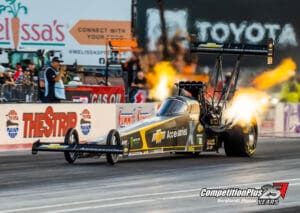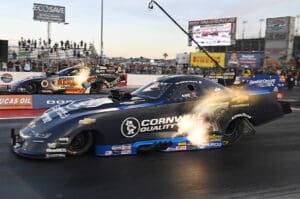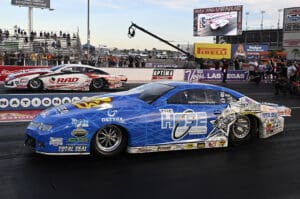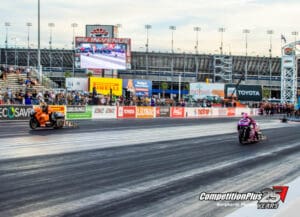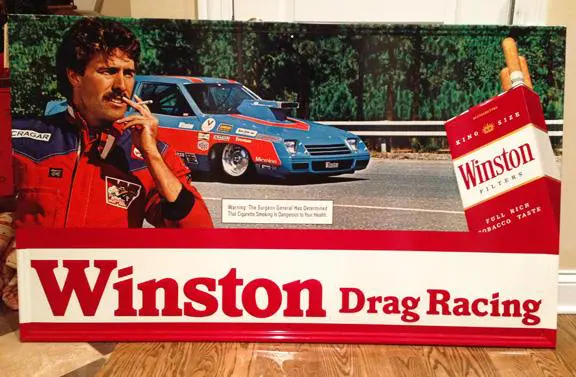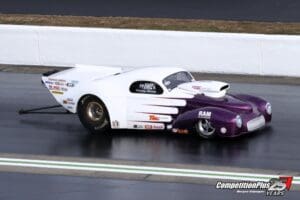Annette Summer didn’t tow to Darana Motorsports Park–Galot with dreams of trophies or time slips. She came chasing something more powerful than a win light — a connection to the past that still burns in her heart.
For Summer, one of Pro Street’s early female trailblazers, the IHRA Outlaw Nitro Series finale wasn’t about points or prestige. It was about gratitude, remembrance, and keeping alive the legacy of those who helped shape her journey through a sport that often made her fight for every ounce of respect.
“This is awesome,” Summer said, looking around the packed North Carolina facility. “This is like the old days. I mean, this place is freaking packed. They had them lined up at the gate last night, rigs coming in from Rockingham. There were no more parking places in this crowd nowhere.”
That old-school energy was exactly what she had missed. It had been more than two decades since her last IHRA event — back when nitrous Pro Mods ruled the lanes, and names like Jenkins, Mauney, and Cannon set the pace. But this time, Summer wasn’t just returning to the racetrack; she was bringing a legend back to life.
She arrived with “Barney,” the famous 1941 Willys built by Tommy Mauney for the 1995 IHRA Pro Modified season. That deep purple car wasn’t just another nostalgia piece. It was a weapon of history — the same one that ended Scotty Cannon’s five-year reign and started a new era for the class.
After Mauney’s title-winning year, the Parsons Brothers purchased the car, hiring Shannon Jenkins to drive. Jenkins went on to win IHRA championships in 1997 and 1999, making “Barney” the first car to claim multiple titles in IHRA Pro Mod history. Later, it was owned by the Ledford family, keeping its legacy alive for years after its heyday.
Now, three decades later, it’s in Summer’s hands — and she treats it less like a race car and more like a sacred artifact.
“It’s almost around the 30-year anniversary of that car coming out the first time,” she said. “This is everybody’s favorite car. It’s not just mine. It belongs to all of us who lived that time.”
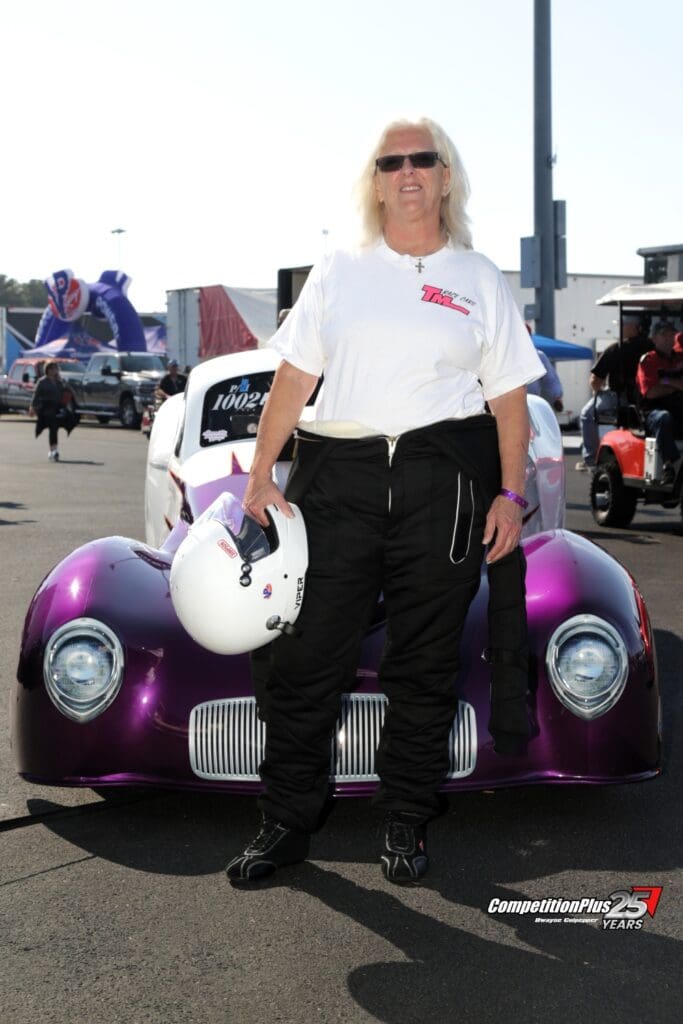
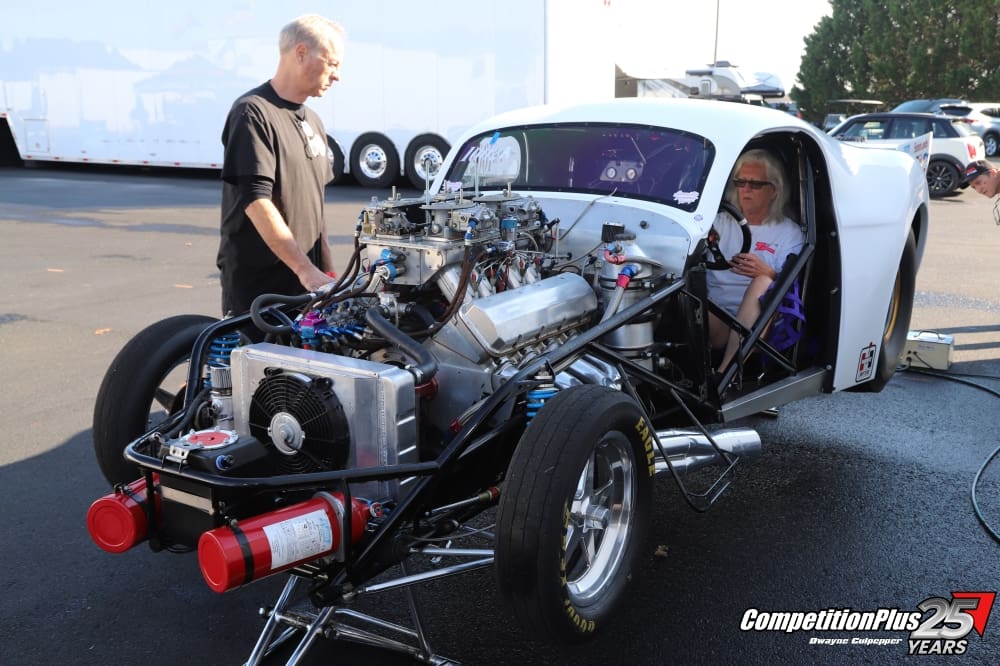
On her first pass, emotion overrode everything else. “Don’t hurt Barney,” she said with a laugh, describing her mindset. But beneath the humor was genuine anxiety.
“I was a little nervous because the car hadn’t been down a track in 18 years,” she said. “I had butterflies in my gut. It went left and I brought it back, and it drove left some more, and finally I just quit with it.”
The run wasn’t about numbers. She didn’t even check the time slip. “I haven’t seen it,” she admitted. “I’ve been running around like a crazy woman.”
For Summer, the entire weekend felt like a full-circle moment — a mix of nostalgia and healing. “I’m just happy to be here,” she said. “All this is about is honoring the people that helped me — Shannon, Tommy, Gene, and Ron Santhuff. I’m a believer in honoring people before they pass away, not after they pass away. This is what this car is all about. It’s about those people that helped me because I wouldn’t have done nothing without them.”
She meant it. While others focused on tuning curves or data logs, Summer was walking memory lane. Around her were some of the same names who defined an era of door-slammer racing. “Right now, I’m staring at Elijah Morton and John Montecalvo, and down the road it’s Rickie Smith,” she said. “It’s almost like you close your eyes and you go back in time.”
🔥 48-HOUR SALE! 🔥 Odd-lots, short-lots, closeouts & display shirts — all priced to move! 🏁 Get authentic https://t.co/jcAfIG1TiW gear for as low as $10 👕💥
— Competition Plus (@competitionplus) November 6, 2025
When they’re gone, they’re gone!
👉 https://t.co/ZWQRwUgEQb #DragRacing #NHRA #CompetitionPlus #PEAKSquad #Sale… pic.twitter.com/UOWDUKCRSP
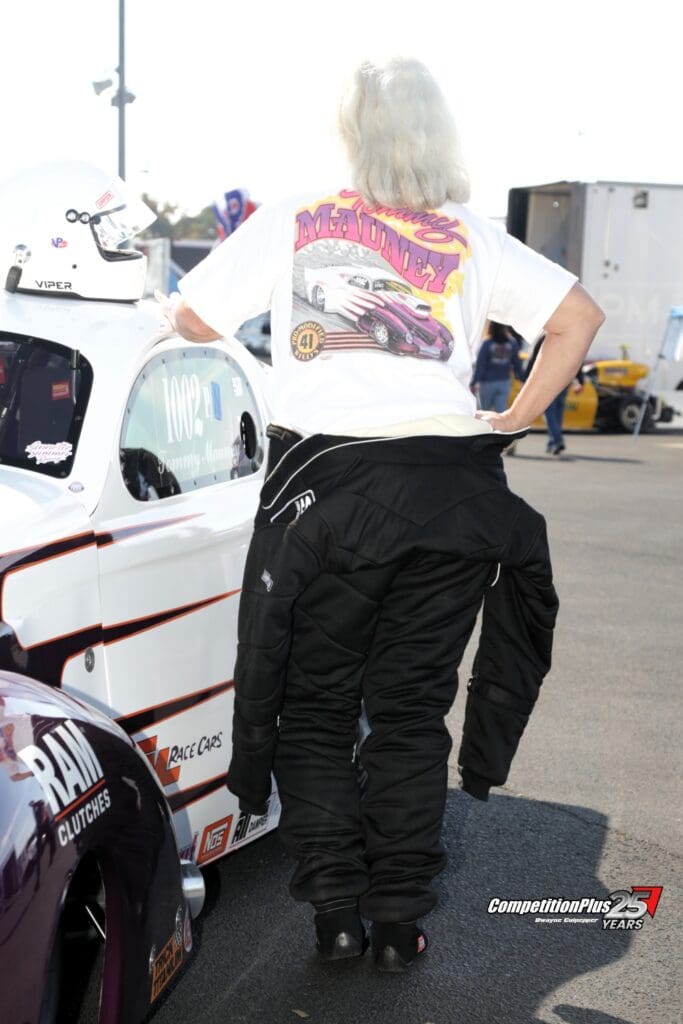
Her pit area reflected that grassroots heart she’s always had. “We’re in the sportsman area because I wasn’t pre-entered,” she said. “We weren’t sure we were going to get everything done in time. So we’re over here, I got Super Stock on my left and Top Sportsman on my right.”
And she wouldn’t have it any other way. “No, it doesn’t bother me,” she said. “I’m just happy to be here.”
That humility has always been part of Summer’s identity. She’s not chasing headlines or national attention. Her satisfaction comes from the smell of nitrous, the handshake of an old friend, or the sight of fans who remember the days when Pro Modified was new and wild.
Her relationship with drag racing has been anything but simple. In the early 2000s, she was one of only a handful of women competing in the high-stakes, high-horsepower world of Pro Mod. Before that, she made her name in Pro Street — a class known for its creativity and chaos as much as competition.
When she stepped away from the sport years ago, few expected her to return. But racing never truly left her. And when the opportunity arose to bring back “Barney,” she knew exactly what she had to do.
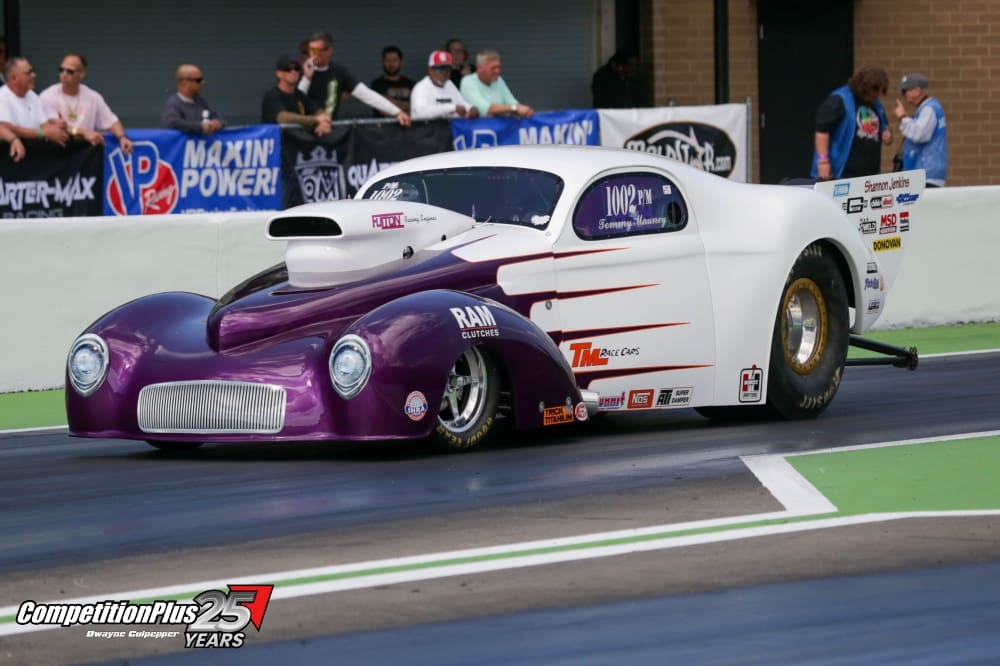
Her last IHRA appearance before this comeback came in 2002, with a nitrous-powered ’57 Corvette. “Back then there were 56 Pro Mods that showed up, and we qualified 12th out of 50-something cars,” she said. “That was at Rockingham.”
She remembers that era vividly — the long nights, the close calls, the community that kept her hooked. And now, standing among old rivals and friends, she feels something rare: peace.
“This is like the old days,” she said again, looking over the pits. “The crowd, the cars, the people — it’s all here.”
She had to borrow a generator from fellow racer Tim Paap just to keep her nitrous bottles warm. “We forgot ours,” she said with a grin. “We don’t even have a radio to listen for the call. But we’re figuring it out.”
It’s that do-it-yourself spirit that defines her — the willingness to laugh through the chaos and find joy in simply being part of it again.
For Annette Summer, returning to IHRA wasn’t about chasing speed or status. It was about paying tribute to those who helped her carve her place in drag racing history — and to the machine that helped change the sport forever.
“I’m just happy to be here,” she said softly, standing beside the purple Willys that carries so many memories. “This one’s for them — for the ones who believed in me when it wasn’t easy. This is about heart, not horsepower.”





